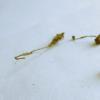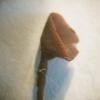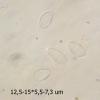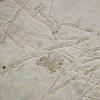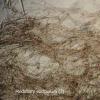
18-12-2025 21:17
Pol DebaenstThe identification took me to Byssonectria deformi

15-12-2025 07:09
 Danny Newman
Danny Newman
indet. Rutstroemiaceae sp. on unk. fallen leavesMc

19-12-2025 10:10
Patrice TANCHAUDBonjour, récolte réalisée en milieu dunaire, a

18-12-2025 17:23
 Bruno Coué
Bruno Coué
Bonjour,je serais heureux d'avoir votre avis sur c

18-12-2025 18:07
Margot en Geert VullingsThese plumes were found on rotten wood.They strong

17-12-2025 18:35
 Michel Hairaud
Michel Hairaud
Bonjour à tous/Hi to everyone I am passing along

15-12-2025 15:48
 Danny Newman
Danny Newman
Melanospora cf. lagenaria on old, rotting, fallen

15-12-2025 15:54
 Johan Boonefaes
Johan Boonefaes
Unknown anamorph found on the ground in coastal sa

15-12-2025 21:11
 Hardware Tony
Hardware Tony
Small clavate hairs, negative croziers and IKI bb

Hello, Forum!
It was collected in 22 March? 2011, on catkins of Corylus avellana.
Looks like Ciboria coryli, but I'm not sure. Is someone familiar with this species?
With best regards,
Irina

Zotto

I fully concur, and I add that it is necessary to have living spores in order to see the two nuclei. I am not sure whether one can find living spores in Ciboria when the material was dry for some months.
Zotto

Zotto, now I see that I really squashed spores my preparation.
Irina?

Wow! Was it a fresh specimen?
And I will wait for the next spring and do my best to look at fresh material (hope to have a field microscope by that time).
Irina

At least Ciboria conformata kept some spores alive after it was dry for a week. See attach, you can see some spores still with the nucleolus. I use little plastic bags to keep moisture in the field and then I put them as soon as possible in the fridge till I can study them.
Raúl

it is from a single fresh specimen, that I found in March this year.
Regards
Martin
PS: and as Raúl said: you don't need a field microscope. Just put your collection in a plastic bag or box and keep it slightly moist for comfortable examination at home...

